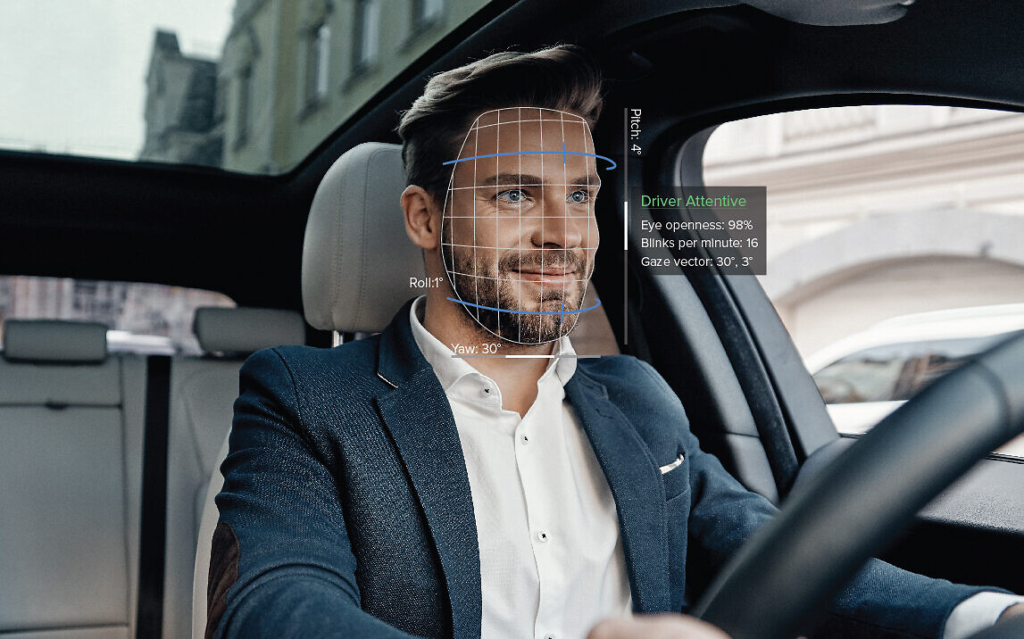
In today’s fast-paced world, maintaining focus while driving is more critical than ever. Driver Attention Monitoring (DAM) systems are designed to tackle one of the most pressing challenges on the road: driver distraction and drowsiness. As part of the broader suite of advanced driver assistance systems (ADAS), DAM technology plays a crucial role in enhancing road safety by alerting drivers when their attention wanes or when they exhibit signs of fatigue. Here’s a detailed exploration of how Driver Attention Monitoring works, its benefits, and its limitations.

1. How Driver Attention Monitoring Works
Driver Attention Monitoring systems use a combination of sensors, cameras, and algorithms to assess and monitor a driver’s level of alertness and attentiveness. Here’s an overview of the system’s operation:
- Cameras and Sensors: DAM systems are typically equipped with cameras and sensors installed near the driver’s seat, often positioned to capture facial expressions and head movements. These components track the driver’s eye movements, gaze direction, and head position.
- Behavioral Analysis: The data collected by the cameras and sensors is analyzed by sophisticated algorithms to determine the driver’s level of alertness. The system assesses indicators such as eye closure duration, head nodding, and gaze patterns to detect signs of distraction or drowsiness.
- Alerts and Warnings: When the DAM system identifies potential signs of inattention or fatigue, it activates alerts to prompt the driver. Common alert methods include visual warnings on the dashboard, audible alarms, and even haptic feedback like seat vibrations. These alerts are designed to capture the driver’s attention and encourage corrective action.
- Integration with Other Systems: Many DAM systems are integrated with other safety features, such as lane-keeping assist or adaptive cruise control. This integration provides a comprehensive approach to driver safety and helps manage potential risks associated with distraction or drowsiness.
2. Benefits of Driver Attention Monitoring
Driver Attention Monitoring systems offer several significant benefits that enhance overall driving safety and reduce the risk of accidents:
- Enhanced Safety: The primary benefit of DAM is its ability to enhance safety by detecting and alerting drivers when their attention or alertness levels drop. This proactive approach helps prevent accidents caused by distracted or drowsy driving.
- Reduced Risk of Accidents: By alerting drivers to signs of fatigue or distraction, DAM systems help reduce the likelihood of accidents. The system’s timely alerts encourage drivers to take corrective actions, such as taking a break or refocusing on the road.
- Increased Driver Awareness: DAM systems contribute to greater driver awareness by providing real-time feedback on attention levels. This increased awareness helps drivers recognize when they need to improve their focus or take a break.
- Support for Long-Distance Travel: For drivers undertaking long journeys, DAM systems offer valuable support by monitoring alertness and preventing fatigue-related accidents. The system helps ensure that drivers remain attentive and safe throughout extended trips.
3. Limitations of Driver Attention Monitoring
While DAM systems offer valuable benefits, they also have limitations that drivers should be aware of:

- Accuracy and Reliability: The accuracy of DAM systems can be affected by various factors, such as lighting conditions, camera positioning, and the driver’s physical appearance. Inaccurate readings may lead to false alerts or missed signs of inattention.
- Driver Dependence: There is a risk that drivers may become overly reliant on DAM systems, leading to reduced attention and vigilance. It’s important to use the system as a supplementary tool rather than a substitute for active driving and awareness.
- System Limitations: DAM systems may not be effective in detecting all forms of distraction or fatigue. For example, the system may struggle to identify subtle signs of drowsiness or non-obvious distractions.
- Privacy Concerns: Some drivers may have concerns about the privacy implications of monitoring systems that track their facial expressions and behaviors. It’s essential to ensure that the system’s data is used responsibly and in accordance with privacy regulations.
4. Best Practices for Using Driver Attention Monitoring
To maximize the benefits of Driver Attention Monitoring and ensure its effective operation, consider the following best practices:
- Understand Your System: Familiarize yourself with the features and functionality of your vehicle’s DAM system by consulting the owner’s manual. Knowing how the system operates and what to expect will help you use it effectively.
- Maintain Full Attention: Use DAM as a supportive tool to enhance your driving, but prioritize full attention and awareness. Avoid relying solely on the system and continue to practice safe driving habits.
- Take Regular Breaks: If you’re undertaking a long journey, take regular breaks to rest and refresh yourself. DAM can help monitor alertness, but taking breaks is essential for preventing fatigue-related accidents.
- Be Aware of System Limitations: Recognize that DAM systems may have limitations and be prepared to stay vigilant in all driving conditions. The system may not detect every potential hazard or issue, so continue to drive responsibly.
5. Conclusion
Driver Attention Monitoring is a valuable technology that enhances driving safety by detecting and alerting drivers to signs of distraction or drowsiness. By providing real-time feedback and timely alerts, DAM systems help prevent accidents and promote better driving practices. Understanding how DAM works, its benefits, and its limitations allows drivers to make the most of this technology while maintaining active driving vigilance. As automotive technology continues to evolve, Driver Attention Monitoring remains a key component in improving road safety and ensuring a safer driving experience for all.




